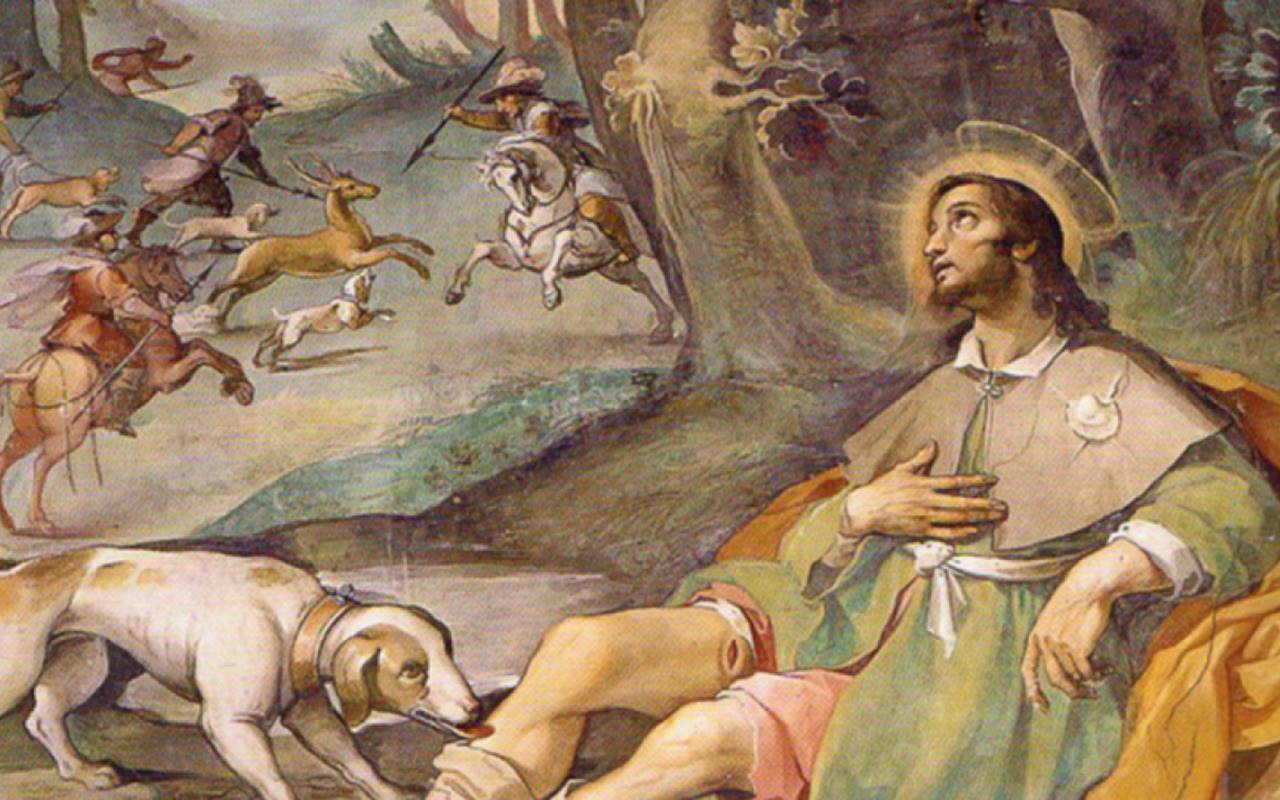St. Roch - The Patron Saint of Dogs & Bachelors
Discover the tale of St. Roch, the patron saint of dogs. Uncover his legacy of compassion, healing, and the deep bond shared between humans and dogs.

The Roch Society takes its name from Saint Roch, who is rightly venerated as the Patron Saint of Dogs (and bachelors). The journey of St. Roch from a privileged nobleman to a revered saint is a remarkable one. It’s a tale that highlights the enduring and profound relationship between dogs and humans, a bond that has touched hearts across countries and cultures for centuries.
Born Roch de Montpellier into a wealthy French noble family in the 14th century, and at the age of 20 he chose to leave behind a life of privilege. He was driven by a deep desire to help those in need, to live a life of humility and service, and he ultimately decided to dedicate himself to spiritual growth and selflessness.
The age of 20 was when he became an orphan, and his response to the loss of his parents was extraordinary. He gave away all his possessions, renounced his noble title, and put on the simple clothes of a pilgrim to travel to Rome, a city grappling with the devastating plague. As he journeyed, he stopped in Italian towns afflicted by the plague, to help the sick with "miraculous healing abilities," and through this work, he eventually became venerated throughout Italy as San Rocco.
While caring for others, Roch himself contracted the plague through sustained contact with the infected. Recognizing his condition, he withdrew into a forest, built a shelter, and prepared to die, unable to cure himself as he had done for so many others. He was on the brink of death, alone in the forest, when suddenly a dog appeared. The dog had somehow found him by the stench of his affliction.
It seemed to understand Roch's desperate state and began to bring him bread, taken from his owner's table, to keep him alive. The dog also licked his plague wounds and, through its unwavering affection, provided Roch with the emotional support and hope he needed to survive his illness and navigate through what was quite possibly one of the darkest and most vulnerable periods in his life.
The companionship, care, and devotion shown by that dog were critical to Roch's eventual recovery. This powerful story of the miraculous bond between Roch and what eventually became his dog serves as a powerful testament to the spiritual connection between humans and their loyal friends. This very spiritual connection is the bedrock of our vision and the foundation of everything we do at Roch.
St. Roch's Dog: Guinefort
The story of St. Roch's dog, Guinefort, is so significant that he is considered a saint by many, and his tale continues even after St. Roch's passing. Guinefort was owned by a local nobleman, Count Gothard. After Roch recovered, the dog led him back to the Count, who became a friend and student of Roch and eventually gifted Guinefort to him. Once Roch had fully recovered, he and his dog made their way back to Montpellier in France. Tragically, upon his return, Roch was arrested as a spy and spent five years in prison before his death behind bars in 1327.
Guinefort survived and was taken in by another noble family, becoming a legend in his own right. One day, the family went out, leaving Guinefort, their baby, and the nanny at home. While the nanny was distracted, a snake appeared and attacked the baby. Without hesitation, Guinefort sprang to the baby's defense and killed the snake, leaving blood and gore on the floor and the baby. When the family returned, their initial, heartbreaking reaction was to believe Guinefort had harmed their child. In that emotional moment, they killed Guinefort before realizing their terrible mistake and understanding that he had, in fact, saved their baby's life.
The nobleman, in his profound grief and dawning realization of Guinefort's sacrifice, buried him in a well and planted trees to mark his grave. This spot became a place of reverence, with local women from nearby villages bringing their babies, praying to Guinefort for protection, and leaving offerings. The story, though tragic, illustrates the deep, often sacred, and sometimes miraculous bond between humans and dogs. It's a bond built on loyalty, protection, and unconditional love, the essence of what drives our work at The Roch Society.
As the founder, I see this story not just as a historical anecdote, but as a testament to the incredible capacity for dogs to impact our lives so profoundly. Our mission at The Roch Society is to honor this extraordinary bond by ensuring that our four-legged friends are not just tolerated, but truly welcomed, cherished, and integrated into our lives. This story of Guinefort, the loyal protector, is a powerful reminder of why we do what we do, work towards a more canine-inclusive world where the sacred bond between humans and dogs is celebrated.
Source: The Golden Legend (1295) by Jacobus de Varagine, Archbishop of Genoa.Source: The Cult of Guinefort, an Unusual Saint by Michael Lynn.


